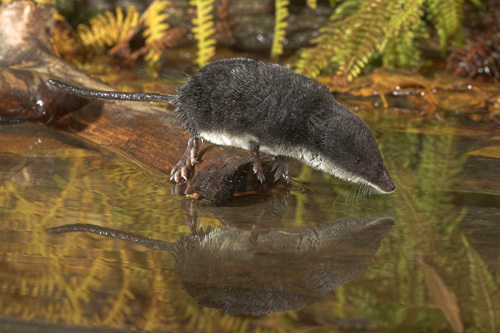Interactions
The Eurasian water shrew lives a relatively solitary life. As a result of being solitary organisms, there isn't very much information about other organisms they interact with. However, Eurasian water shrew that have been placed in captivity have interacted with another type of shrew, N. anomalus. They each showed signs of competitiveness in both aquatic and terrestrial environments.

Neomys anomalus (Mediterranean Water Shrew).
It has been noted that the Eurasian water shrew is highly territorial and displayed aggressive behavior towards other types of shrews and to other members of its own species.
It has been documented that the Eurasian water shrew exhibits a parasitic symbiotic relationship with a species of Trypanosoma, called Trypanosoma ornata. This is a blood parasite is classified as a member of the subgenera Megatrypanum. There is relatively little information regarding what effect this blood parasite has on Eurasian Water Shrews. One characteristic of this parasite comes from its specific epithet, ornata, which means it has a striped pattern on its body surface. If you're interested in learning about another species of Trypanosoma, check out Trypanosoma brucei.
As mentioned earlier, the Eurasian water shrew is an isolated organism, but it is not without its predators. The Eurasian Water Shrew is hunted by organisms that include Mustela nivalis (weasel), cats, owls, foxes. Since shrews hunt primarily in aquatic environments, they can also be hunted by larger fish, such as the pike. However, it isn't consumed by its predators, find out why in Facts.
